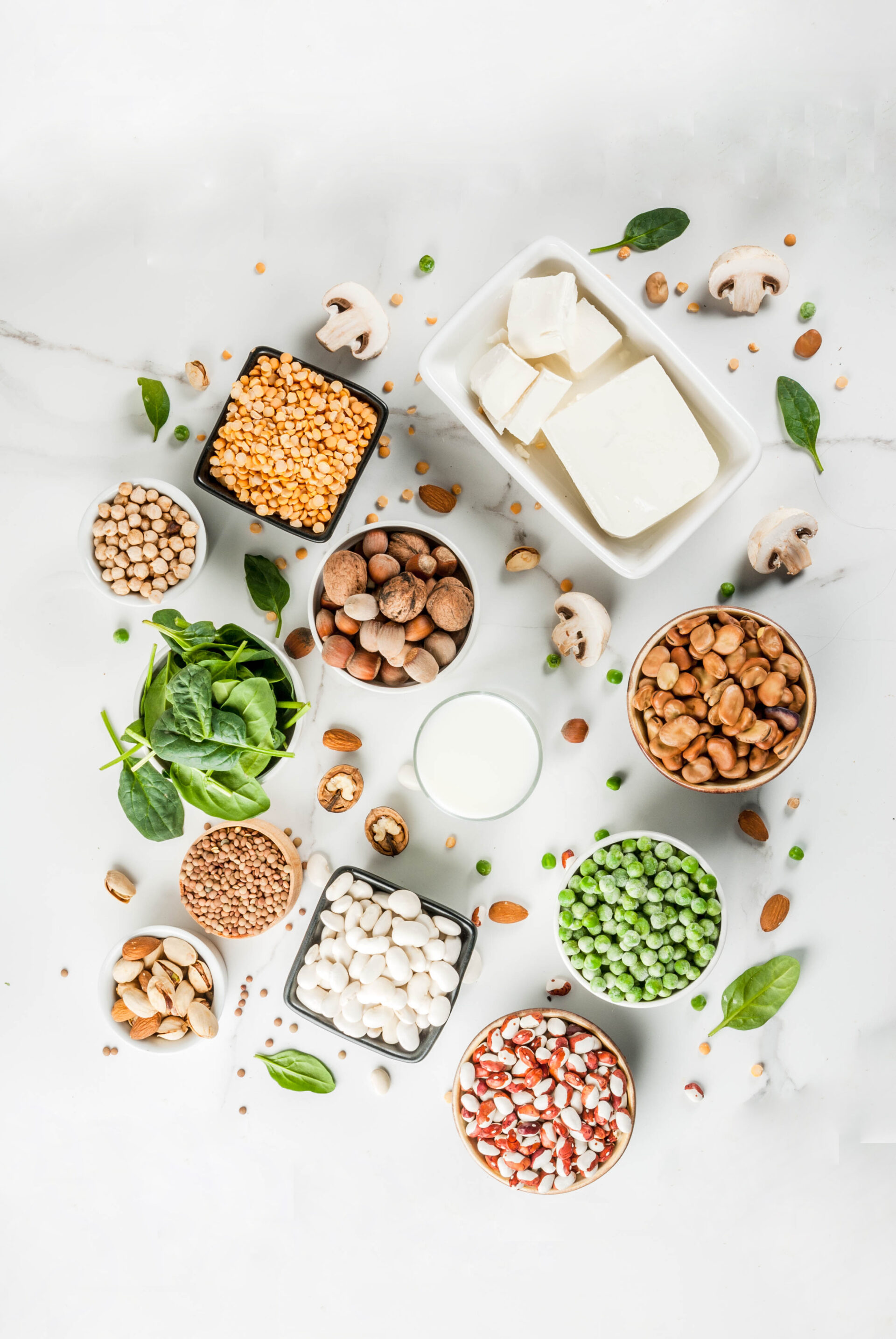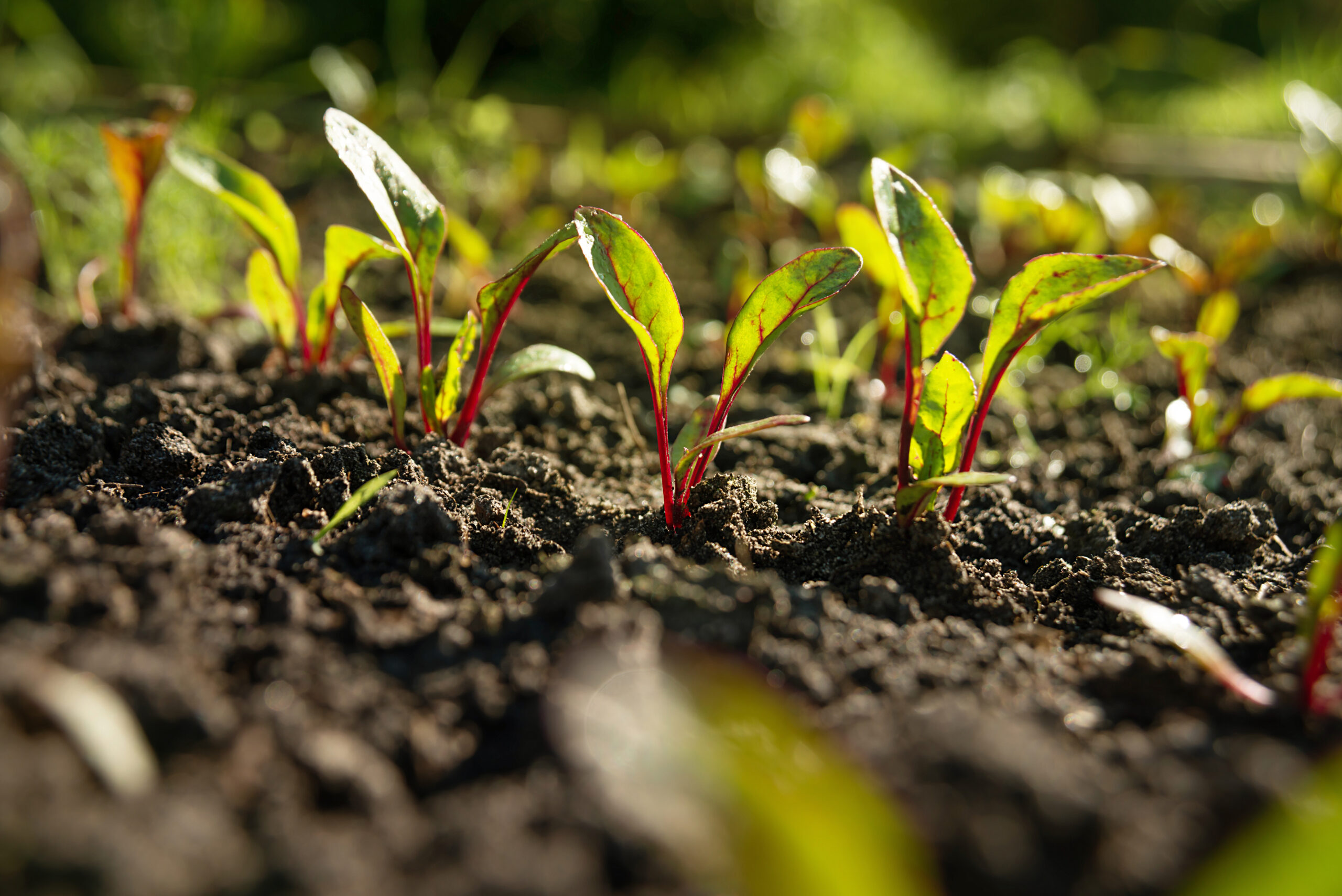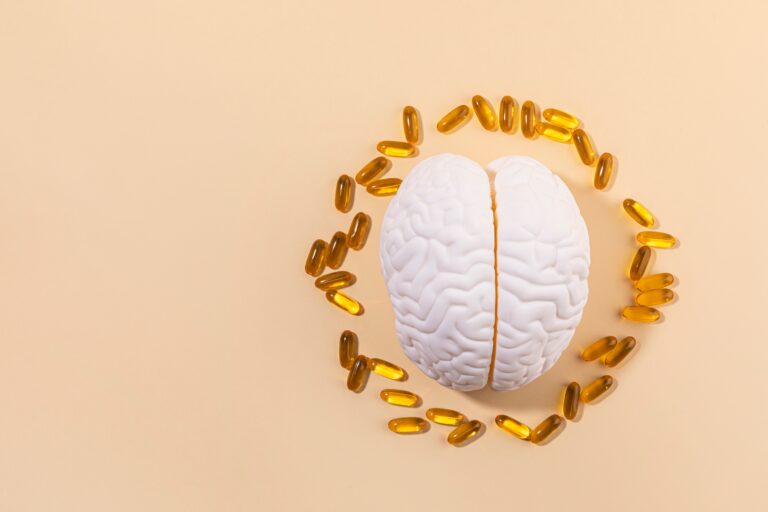
Patient Education
Advance your wellness journey with Wholistic Matters, your go-to source for science-backed insights on whole food nutrition and integrative health solutions.
Nourish With Nature
Explore the world of natural and integrative health with Wholistic Matters. Our clinically driven insights and educational content provide the knowledge needed for holistic well-being. Your empowered wellness journey starts here.
Most Popular
Nutrition, Lifestyle, and Exercise for Optimal Cardiovascular Health
Savannah Limbaugh, DCN, MPH, CPT
(8 min read)
When discussing cardiovascular health, the changes made with nutritional interventions and changing lifestyle habits can be influential in reducing your risk of cardiovascular disease in the long run. The most important factors are consuming a healthy diet and ensuring participation in regular exercise to get the heart pumping!
Read Article
Dietary Supplement Forms: Understanding the Pros, Cons, and Myths
Savannah Limbaugh, DCN, MPH, CPT
(10 min read)
Dietary supplements are intended to supplement your diet by promoting nutrient quality and density. There is an abundance of dietary supplement forms to choose from including tablets, capsules, liquids, powders, wafers, gummies, and soft gels. It can be difficult to understand which form would be ideal for certain individuals, so it is important to consult with a healthcare provider for guidance, especially for specific health concerns or anyone on medications.
Read Article
Natural Remedies for Women’s Reproductive Health: the Childbearing Years
Savannah Limbaugh, DCN, MPH, CPT
(8 min read)
The menstrual cycle is a complex, physiological process influencing the health of reproductive aged women. When discussing female health, it is imperative to stress the importance of a healthy, nutritionally rich diet.
Read Article
Exploring Naturopathic Medicine: A Patient-Centered Root-Cause Approach to Whole Person Health
Daina Parent, ND
(45 min listen)
Dr. Daina Parent, Naturopathic Physician and Clinical Educator at Standard Process, interviews Dr. Michelle Simon, Naturopathic Physician, PhD in Biomedical Engineering, and President and CEO of the Institute for Natural Medicine. Use the audio player above to listen now! And don’t forget to follow and like our podcast channel to stay up-to-date on upcoming podcast episodes.
Listen to Podcast
Children’s Health
Nurturing Gut Health for Kids: Essential Tips and Nutritional Insights
Betsy Miller, MS, CNS, RH(AHG), DCN-c
(6 min read)
Improving children’s gut health during their early years is one of the most important steps a parent or caregiver can take to support their long-term well-being. A healthy gut in childhood not only contributes to better digestion, immunity, and mental health in the present, but it also lays the foundation for a strong, resilient microbiome that can benefit them throughout their life. Nurturing gut health early on can help prevent future health challenges such as allergies, digestive disorders, and even chronic conditions like obesity or diabetes and sets children up for a healthier, more vibrant future.
Read Article
Heart Healthy Compounds in Whole Foods and Dietary Supplements
Savannah Limbaugh, DCN, MPH, CPT
(0 min read)
The cardiovascular system includes the heart and blood vessels which circulate blood throughout the body. It is responsible for delivering oxygen to every cell in the body and supplying nutrients like glucose to the muscles. Cardiovascular disease, or conditions resulting in abnormalities in the heart and blood vessels, is the leading cause of death in the United States. By adopting a healthy diet, engaging in regular physical activity, and optimizing metabolic health one can reduce their risk of developed cardiovascular disease.
Adopting a healthy diet can be one of the most modifiable and effective options to improve cardiovascular health. This includes opting for more heart healthy food options and reducing those that can contribute to cardiovascular disease. Heart healthy foods like broccoli or cauliflower are not just sources of nutrients, they also contain compounds with far reaching health benefits. These compounds directly influence cellular function – resulting in promotion of cardiovascular health. The discussion below highlights some well researched compounds for supporting this system.
Heart Healthy Compounds
Resveratrol
Resveratrol is a polyphenolic compound with antioxidant properties and cardioprotective benefits. Notably, resveratrol upregulates endothelial nitric oxide synthesis, or eNOS, which is an enzyme that produces nitric oxide.1 The production of eNOS directly regulates, modulates, and controls healthy cardiovascular function.2 Resveratrol is naturally occurring in grape skins, blueberries, cranberries, dark chocolate, almonds and Japanese Knotweed.
Allicin
Garlic contains allicin, which is a biologically active sulfur compound with antioxidant and cardioprotective properties. The effects of allicin have been shown to be quite comprehensive for cardiovascular protection, as it has been linked to a reduction of blood pressure, regulation of blood lipids and cholesterol, reductions in inflammation, improvements in heart cell contraction, and prevention of atherosclerosis and plaque calcification.3 Garlic can easily be implemented into everyday meals as a spice or as a powder.
Quercetin
Quercetin is a natural compound that helps prevent blood cells from sticking together, acts as an antioxidant, and can lower cholesterol levels. When consumed through dietary sources, quercetin has been shown to reduce plaque buildup in the arteries, regulate blood pressure, and prevent blood clotting, which are influential factors in the development of cardiovascular disease.4,5 Quercetin is naturally occurring in onions, kale, buckwheat, blueberries, and apples.
Curcumin
Curcumin is the compound giving turmeric its yellow coloring. It is responsible for the anti-inflammatory, cholesterol reducing, and metabolic supportive properties of turmeric. One of the hallmarks of turmeric is its impact on the reduction of systemic inflammation. Systemic inflammation is linked to multiple cardiovascular-related diseases, like diabetes, hypertension, and atherosclerosis. Additionally, as an antioxidant, curcumin can neutralize free radicals and upregulate superoxide dismutase (SOD), an important antioxidant enzyme, which promotes a healthy inflammatory response.6 Curcumin is only found in turmeric but can be paired with fenugreek seed extract or black pepper for optimal absorption. As opposed to black pepper, the formulation with fenugreek seed extract results in higher levels of free curcuminoids in circulation after absorption.
CoQ10
CoQ10 is an antioxidant naturally produced by the body which is utilized by cells for energy production necessary for growth, maintenance, and cellular function. As an antioxidant, CoQ10 reduces oxidative stress and promotes mitochondrial functioning, which benefits cardiovascular health. Specifically, CoQ10 has been evaluated to reduce the risk of hypertension, ischemic heart disease, myocardial infarction, and provide therapeutic benefits to patients with heart failure.7,8 CoQ10 is found in oily fish, red meat, nuts, organ meats and dietary supplements.
Sulforaphane
Sulforaphane is a sulfur-containing compound found in cruciferous vegetables. It has antioxidant and anti-inflammatory properties, and the ability to induce detoxification enzymes. Uniquely, sulforaphane activates Nrf2, a defense mechanism against oxidative stress, toxins and cellular damage, which then protects the health of the cardiovascular system.9 Additionally, sulforaphane might protect the heart from acute cardiac stress which could result in a reduction of heart attack or stroke.10 Sulforaphane is naturally occurring in cruciferous vegetables like brussel sprouts, broccoli, kale, cauliflower, arugula and Spanish black radish.
Conclusion
Cardiovascular disease remains the leading cause of death in the United States, so it is important to take control of modifiable factors like diet and lifestyle. Incorporating heart-healthy compounds found in foods like garlic, broccoli, and berries can provide powerful support. And compounds like resveratrol, allicin, quercetin, curcumin, CoQ10 and sulforaphane have all shown promising benefits. Adding these nutrient dense foods and compounds to the diet can help provide the support necessary for optimal cardiovascular function, and protection of long-term health.
Read Article
Antioxidants and Physical Activity
Betsy Miller, MS, CNS, RH(AHG), DCN-c
(0 min read)
What Are Antioxidants?
Antioxidants are compounds found in foods and produced by the body that help protect cells from oxidative stress and damage caused by free radicals. Common antioxidants include vitamins C and E, selenium, flavonoids, and carotenoids, which are found in fruits, vegetables, nuts, herbs and whole grains. Free radicals, also known as Reactive Oxygen Species (ROS), are molecules produced by the body as either a natural byproduct of metabolism, immune response, or in response to toxin exposure. If left unchecked, free radicals lead to a process known as oxidative stress, which can damage cells, proteins, and DNA.
Excess oxidative stress contributes significantly to aging, inflammation and mitochondrial damage, and has been implicated in the pathogenesis of various chronic diseases such as heart disease, diabetes, and cancer.1 Fortunately, the human body has a complex antioxidant defense system that utilizes both dietary intake of antioxidants and our own natural production of antioxidant compounds like glutathione. Consuming a diet rich in antioxidants can help strengthen this defense system to reduce the harmful effects of free radicals and decrease overall oxidative stress in the body. Antioxidants also support the body’s natural detoxification processes, helping to eliminate toxins and pollutants that may otherwise harm the body.
How Do Antioxidants Impact Exercise?
During physical activity, particularly intense or prolonged exercise, the body has increased metabolic needs, which generates a higher volume of free radicals. Endurance activities like running, cycling, or swimming tend to generate much higher levels of oxidative stress because they significantly increase the body’s oxygen consumption, which in turn leads to a higher production of ROS within the muscles.2
This accumulation of ROS leads to an imbalance between the generation of free radicals and the body’s ability to neutralize them with antioxidants, or the process of oxidative stress. Excessive oxidative stress generated during exercise can damage muscle tissue, impair recovery and contribute to fatigue.2 Eating an antioxidant rich diet or supplementing with antioxidants, particularly vitamins C and E, can help reduce muscle damage and inflammation and speed up the recovery process after intense training sessions.3-5
Dietary antioxidants can also contribute to improved endurance, a key aspect of physical activity for training athletes. Mitochondria, also known as the ‘batteries of the cell,’ are responsible for producing energy during exercise, and by enhancing mitochondrial efficiency, antioxidants may help improve exercise performance and endurance.6
How To Get More Dietary Antioxidants
Fortunately, the foods highest in antioxidants are often the most delicious. Bright red, blue, purple and yellow fruits and vegetables like berries, grapes, plums, apples, pomegranates and beets are rich in compounds called flavonoids which give them their beautiful colors and are also a rich source of antioxidant activity. In general, the more colorful a fruit or vegetable is, the more antioxidant value it has.
Leafy greens like spinach and kale, cruciferous vegetables like broccoli, and root vegetables like carrots and sweet potatoes are rich in vitamin C and carotenoids that provide antioxidant activity. Green tea and raw cacao powder are both known as antioxidant powerhouses because of their polyphenol content. To stay out of oxidative debt the average person needs about 8,000-11,000 antioxidant units per day, while those engaging in intense physical activity will need significantly more to offset that increased oxidative stress.7
While it seems like a huge number, small substitutions like swapping blueberries for a banana, adding more herbs to recipes and choosing mixed greens instead of iceberg lettuce can really help increase daily antioxidant intake. For example, a 1 cup serving of blueberries contains a whopping 9,019 ORAC (Oxygen Radical Absorbance Capacity) units, while just 4 leaves of raw spinach pack 1,056 units. Making a blueberry and spinach smoothie could easily contain over 10,000 ORAC units- nearly the entire recommended daily intake. Adding a nutrient-dense greens powder daily can also help with increasing overall antioxidant intake.
Key Takeaway
While the full potential for antioxidant supplementation in physical performance is still being explored, the research supporting dietary antioxidant intake for general health and longevity is well-established. Antioxidants play a vital role in reducing oxidative stress and inflammation, and regular consumption of antioxidants supports immune function, improves cellular function, helps maintain healthy aging and supports the body’s ability to adapt to physical demands like exercise.
Read Article
The Role of Fatty Acids in Supporting Brain Health
Keri Barron, PhD
(0 min read)
The human brain is approximately 60% fat, and because of this, healthy fat consumption is essential for overall brain health. Fats come in various shapes and sizes, with physical features that determine their effects in the body. Saturated fats, also called saturated fatty acids, tend to be solid at room temperature due to their shape. It allows them to pack closely together, resulting in a solid composition. Unsaturated fats, on the other hand, tend to be liquid at room temperature. Their structure makes it difficult for them to pack together, so they do not fit together well, leaving space between molecules.
Omega-3 fatty acids are a type of unsaturated fatty acid that have many benefits in the body, mainly due to their anti-inflammatory effects. They can promote healthy inflammation by producing anti-inflammatory mediators that can help resolve inflammation and block the production of inflammatory mediators. These anti-inflammatory effects can benefit many body parts, including the heart, eyes, joints, and brain. Importantly, omega-3 fatty acids help the brain during every stage of life, from supporting fetal development to preventing dementia later in life.1
While omega-3 fatty acids tend to be healthy when consumed in moderation, omega-6 fatty acids often have the opposite effect. The body uses omega-6 fatty acids to make compounds that promote inflammation. However, the body requires both omega-3 and omega-6 fatty acids. Their ratio impacts the overall effect, with a high ratio of omega-6 to omega-3 fatty acids resulting in a more inflamed environment, while a lower ratio of omega-6 to omega-3 fatty acids promotes the resolution of inflammation. Unfortunately, the ratio of omega-6 to omega-3 fatty acids in the Standard American Diet is about five times more than the recommended ratio. This overconsumption of omega-6 fatty acids relative to omega-3 fatty acids can lead to inflammation throughout the body, including the brain.
Omega-3 fatty acids are essential for various brain functions and overall brain health. They are a structural component of different cells in the brain, including neurons, and are protective against cellular death. They also exert anti-inflammatory effects. Inflammation in the brain, also called neuroinflammation, can lead to a variety of negative health effects and has been linked to a variety of cognitive issues ranging from sleep disorders to Alzheimer’s disease.2,3
Scientists have discovered that while omega-3 fatty acids are healthy for the brain, specific fatty acids exert unique effects. Docosahexaenoic acid (DHA) is critical for brain development, while eicosapentaenoic acid (EPA) is useful for balancing mood and emotions and improving behavioral conditions.4 Practically, combining DHA and EPA supplements can deliver the benefits of both omega-3 fatty acids. Highly rigorous scientific studies have shown that DHA and EPA can be beneficial in a variety of cognitive and behavioral conditions, including attention-deficit/hyperactivity disorder (ADHD), autism spectrum disorder, depression, and bipolar disorder.4
Read Article
Bone, Joint, & Muscle
Glucosamine and Physical Activity
Nancy Morrow, MS
(0 min read)
Joints can be thought of as amazing hinges of the musculoskeletal system. They are made up of cartilage, ligaments, tendons, and fluids, which all work together to keep the body moving smoothly. But over time, this system can start to wear down, causing even simple movements to become painful. Injuries from sports or accidents can accelerate this process, especially in athletes who stress their bodies through training and competition. In fact, research shows that those who suffer a knee injury in their youth are three times more likely to develop osteoarthritis by the time they are 65.1
This is where glucosamine might play a role. Glucosamine is a natural compound found in cartilage. And preliminary research into its use as a dietary supplement has resulted in some interesting findings.2 Not only have studies shown glucosamine can slow the breakdown of cartilage, but it’s also been shown to help repair cartilage after damage occurs.3,4 This would be an especially powerful effect for athletes in high-impact sports where injuries are common, and recovery can make or break a career. Findings like this, along with an almost universal agreement on the excellent safety profile, make it intriguing to explore the potential for supplementing glucosamine to support joint health.
Protection and Recovery
A16-week study of soccer players supplementing with 2000 mg glucosamine daily revealed significantly less cartilage breakdown compared to those who didn’t supplement, while also maintaining normal synthesis of new cartilage.3 Another study comparing 1500 mg glucosamine to a dose of 3000 mg in rugby and soccer players showed that both doses decreased the ratio of cartilage breakdown to cartilage synthesis, with those on the higher dose seeing greater improvement.5
Competitive athletes are particularly prone to joint injuries, and a slow recovery can impact training, and readiness for events. Looking at the effects of glucosamine for speeding recovery is a worthy endeavor because positive effects could increase one’s longevity in their sport. Studies are limited on this end point, but one study that followed 121 male patients with acute knee injuries for four weeks showed that a dose of 1500 mg per day improved knee flexion and extension more significantly than placebo.4 Further research is needed, but this effect could be especially impactful for athletes, where a faster recovery can mean the difference between competing, or sitting on the side lines.
Slowed Progression
Of course, athletes are not the only population in need of joint support. Anyone can experience the breakdown of cartilage and other tissues due to aging, excess body weight, or repetitive movements. And all these scenarios increase the risk of osteoarthritis (OA). Pain, stiffness, tenderness, and swelling are hallmark signs of OA which all have a significant impact on quality of life. Preliminary evidence has shown that glucosamine may slow this process and may even influence positive structural changes.
A three-year study that followed 202 OA patients supplementing with 1500 mg/day of glucosamine sulfate looked at joint space width which is an indicator of disease progression.6 Over the course of the study, the placebo group showed a worsening of joint space width, while the glucosamine group did not. Additionally, there were significant improvements in bone spur severity in the glucosamine group versus placebo.7
Further evidence comes from a review of randomized, placebo-controlled clinical trials which demonstrated highly significant efficacy of glucosamine on all outcomes of osteoarthritis.2 These outcomes included joint space narrowing, and WOMAC assessment, which is a standardized questionnaire assessing pain, stiffness, and physical function of the joints.
While the full potential of glucosamine for supporting joint health is still under investigation, data thus far has been promising. Furthermore, there have been no reports of serious medication interactions, or significant adverse events with glucosamine supplementation, though it should be avoided in those with shellfish allergies.8 The potential role of glucosamine in protecting and repairing cartilage, coupled with evidence of reducing joint pain, stiffness, and joint space width in OA, makes it an exciting substance for further study. Staying active is a key contributor to a healthy lifestyle, and supporting our joints can help ensure a lifetime of mobility and function.
Read Article
Children’s Health
How Much Protein Do Children Need? Nutritional Requirements for Growing Kids
Betsy Miller, MS, CNS, RH(AHG), DCN-c
(0 min read)
What is protein & why is it important?
Protein plays a critical role in the growth, development, and immune function of children. It is one of the three essential macronutrients, along with carbohydrates and fats, meaning that it is a nutrient the body needs in large amounts to provide energy and maintain the body’s structures and systems.
Structurally, protein is composed of amino acids, such as tryptophan, which are the individual building blocks necessary for the creation and repair of tissues throughout the body. During childhood, when rapid growth and development occur, dietary protein helps with the formation of new cells, muscles, bones, and organs.1 Adequate protein intake also supports the development of lean body mass, which helps children gain weight at a healthy rate. It is especially important during periods of intense physical activity and during developmental milestones, such as puberty, when the body requires more protein to fuel its expanding needs.
In addition to physical growth, protein is vital for brain development and cognitive function. Amino acids are necessary for building and maintaining nervous system tissue, including the brain, and for the production of neurotransmitters, the chemical messengers that influence mood, learning, and memory.2 For children, a balanced intake of protein alongside healthy fats and carbohydrates is crucial for supporting intellectual development as well as encouraging positive performance in school.
Protein also plays a key role in maintaining a healthy immune system. The immune system relies on proteins to produce antibodies and enzymes that fight off infections. For children, who are exposed to a plethora of viruses and bacteria during their early years, a well-nourished and resilient immune system is a key component to helping their defense against common illnesses. Protein contributes to the production of immune cells and helps maintain the strength and resilience of the skin, which serves as a physical barrier against pathogens. Inadequate protein intake can impair immune function, making children more susceptible to infections and illnesses.3
How Much Protein for kids by age
The American Academy of Pediatrics recommends that children and adolescents get 10–30% of their daily calories from protein,4 The specific amount of protein a child needs will vary based on their gender and weight; health status and activity level can also impact dietary protein needs.4
For example, a high school athlete will typically need more protein (and overall calories) than their sedentary peers, while a child looking to improve their anthropometrics may need to increase protein to improve satiety and maintain lean muscle mass. The following chart is a reference for protein ranges based on age, however discussing children’s unique health needs and goals with a pediatrician is the best way to determine optimal protein intake:
AgeProtein IntakeToddlers (1-3 years)13 grams per day, or 0.5 grams per pound of body weightChildren (4-8 years)19 grams per dayChildren (9-13 years)34 grams per dayAdolescents (14-18 years)46-52 grams per daybased on the Dietary Reference Intakes guidelines
Best sources of protein & tips for increasing protein intake
While adequate protein intake is important, the quality of protein sources also matters. Several whole-food protein sources from animals and plants provide what is known as a ‘complete protein,’ meaning they contain all nine essential amino acids needed by the body:
Animal sources: – meats including chicken and fish, eggs, dairy
Plant sources: quinoa, buckwheat, soy, chia seeds, edamame, spirulina
Parents can combine incomplete proteins to get all the essential amino acids. For example, you can combine:
Grains and legumes
Nuts and seeds with legumes
Rice and beans
Hummus and pita
Peanut butter on whole grain rice cakes
Ensuring adequate protein intake during the picky eating years can be a real challenge for parents and caregivers. Here are a few tips to sneak protein into even the most resistant eaters:
Make yummy fruit smoothies with some Greek yogurt added in
Combine peanut butter, rolled oats and honey to make a complete-protein no-bake cookie
Dip their favorite berries into sweetened Greek yogurt and freeze for a delicious, protein-packed dessert
Whole grain bread with their favorite nut butter (peanut, almond, cashew), sliced banana and honey drizzled on top
Pasta or rice cooked in bone broth (bone broth is not a complete protein, but will supply several essential amino acids
Read Article


Locate Professional Health Solutions Nearby
Looking for high-quality, practitioner-recommended health solutions? Locate authorized Standard Process practitioners in your area and gain access to premium health services to support your wellness journey.


















